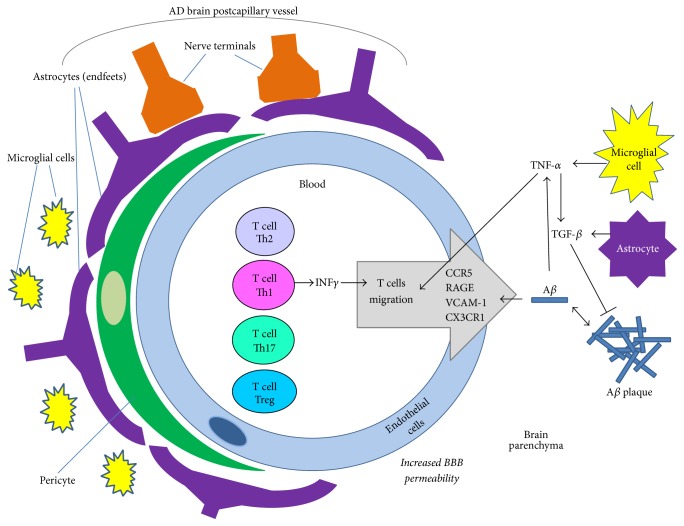Figure 2.
T lymphocytes migration at the blood brain barrier (BBB) in AD. The key role of the BBB is defending the brain against the harmful influence of peripheral factors. In AD the permeability of the BBB is increased, and the migration of peripheral immune cells contributes to the progress of neuroinflammation in the brain. In response to Aβ stimulation from the parenchyma, the transmigration of immune cells from the blood into the brain is mediated by VCAM-1. At postcapillary vessels the immune cells cross the BBB upon interaction with the CX3CR1 receptor on endothelial cells. Other key mediators of the immune cells' migration are the RAGE receptor and the CCR5 chemokine receptor. Moreover, Aβ activates microglial cells to produce TNF-α, which can promote transendothelial migration of T cells and has the ability to enable astroglial cells' activation and overproduction of TGF-β1, which in turn may lead to decreased Aβ plaque loads.

